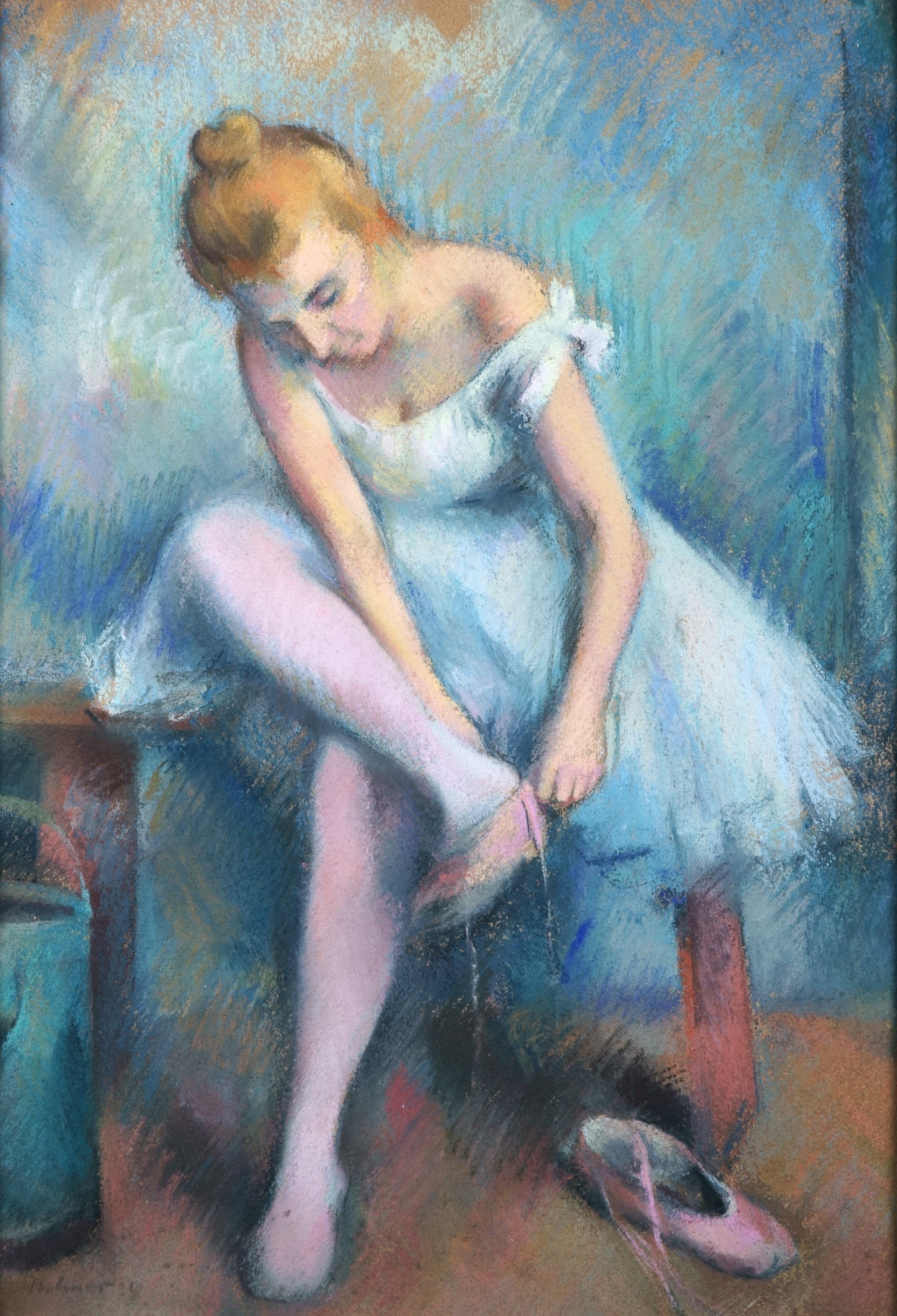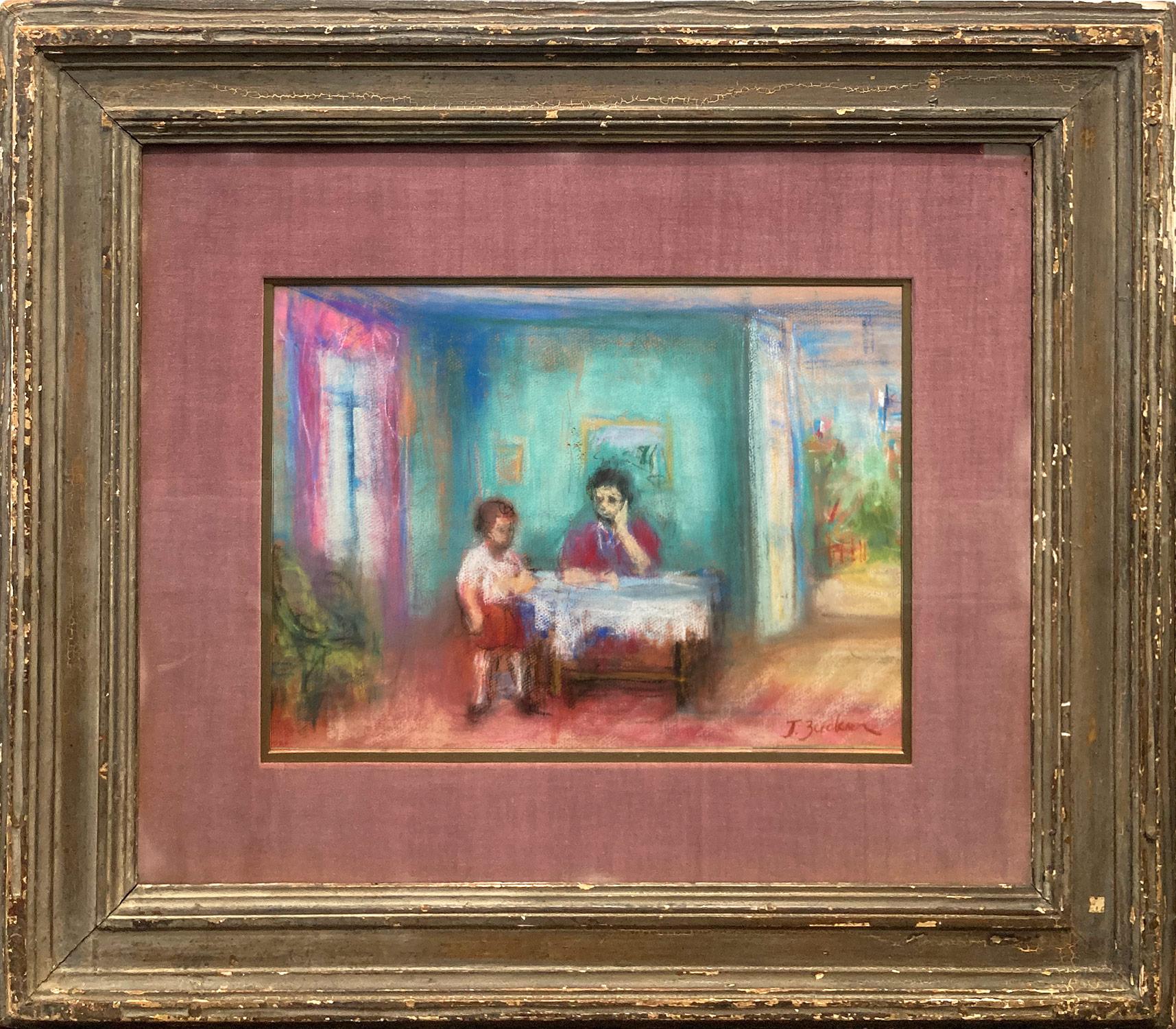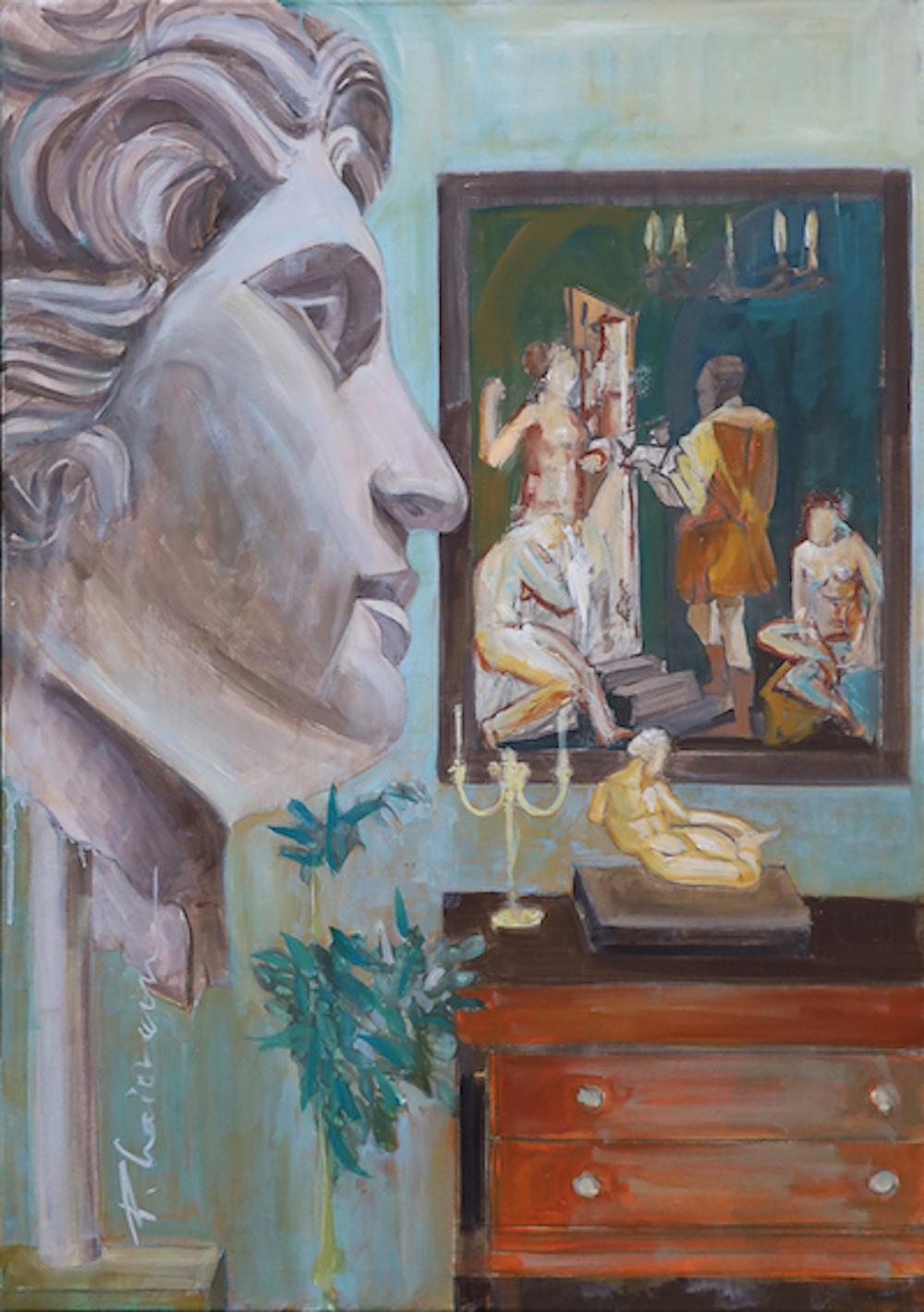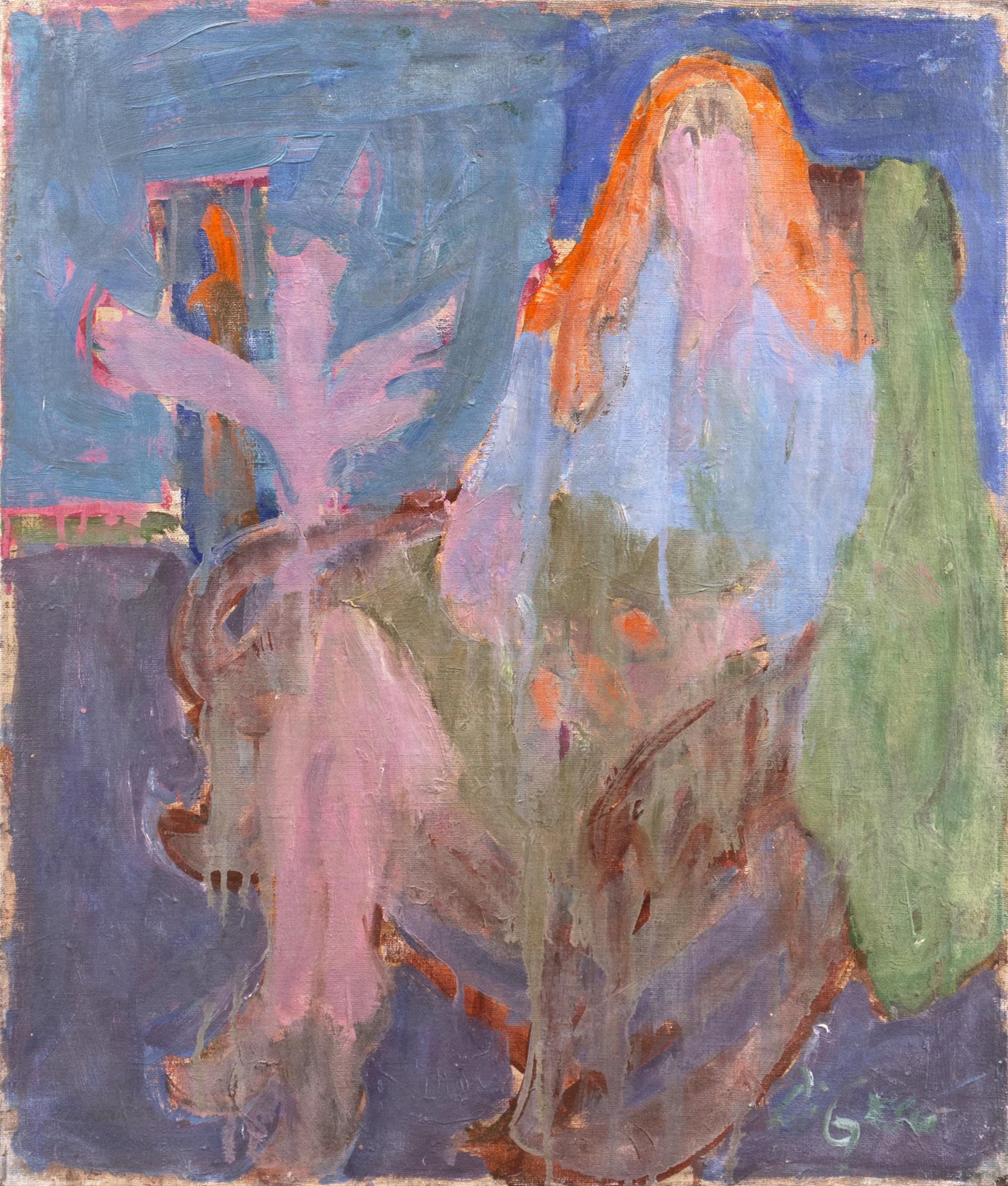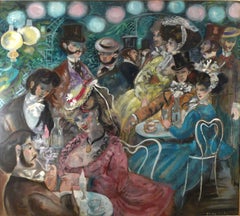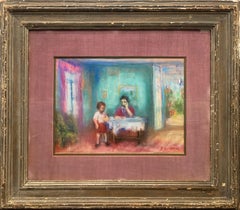"Le Cirque", 20th Century Pastel on Canvas by Spanish Artist Emilio Grau Sala
View Similar Items
Want more images or videos?
Request additional images or videos from the seller
1 of 13
Emilio Grau Sala"Le Cirque", 20th Century Pastel on Canvas by Spanish Artist Emilio Grau SalaCirca 1955
Circa 1955
About the Item
- Creator:Emilio Grau Sala (1911-1975, Spanish)
- Creation Year:Circa 1955
- Dimensions:Height: 21.26 in (54 cm)Width: 31.5 in (80 cm)
- Medium:
- Movement & Style:
- Period:
- Framing:Framing Options Available
- Condition:
- Gallery Location:Madrid, ES
- Reference Number:1stDibs: LU128118541292
About the Seller
5.0
Vetted Seller
These experienced sellers undergo a comprehensive evaluation by our team of in-house experts.
Established in 1977
1stDibs seller since 2019
21 sales on 1stDibs
Typical response time: 2 hours
More From This SellerView All
- "Les Musiciens", 20th Century Oil on Canvas by Spanish Artist Celso LagarBy Celso LagarLocated in Madrid, ESCELSO LAGAR Spanish, 1891 - 1966 LES MUSICIENS signed "Lagar" (lower right) signed again, located & dated "Lagar / Paris 1928" (on the reverse) oil on canvas 23-3/4 x 28-3/4 inches ...Category
1920s Fauvist Figurative Paintings
MaterialsCanvas, Oil
- "Le Moulin de la Galette", Large 20th Century oil on canvas by Emilio Grau SalaBy Emilio Grau SalaLocated in Madrid, ESEMIILIO GRAU SALA Spanish, 1911 - 1975 LE MOULIN DE LA GALETTE signed Grau Sala (lower right) oil on canvas 59-1/4 X 67-1/4 inches (150.5 X 170 cm.) framed: 62-1/2 X 70-1/4 inches (...Category
1930s Post-Impressionist Figurative Paintings
MaterialsCanvas, Oil
- "Espagnoles, 1971", 20th Century Oil on Canvas by Artist Emilio Grau SalaBy Emilio Grau SalaLocated in Madrid, ESEMILIO GRAU SALA Spanish, 1911 - 1975 ESPAGNOLES, 1971 signed "Grau Sala" (lower left) signed again, dated and titled "Grau Sala, 1971, espagnoles" (on the reverse) oil on canvas 1...Category
1970s Post-Impressionist Figurative Paintings
MaterialsCanvas, Oil
- Interieur en EspagneBy Emilio Grau SalaLocated in Madrid, ESEMILIO GRAU SALA Spanish, 1911 - 1975 INTERIEUR EN ESPAGNE signed "Grau Sala" (lower right) signed, titled and dated "GRAU SALA / Interieur en Espagne / 1964" (on the reverse) oil on...Category
1960s Post-Impressionist Figurative Paintings
MaterialsCanvas, Oil
- PaddockBy Emilio Grau SalaLocated in Madrid, ESEMILIO GRAU SALA Spanish, 1911 - 1975 PADDOCK signed "Grau Sala" (lower right) oil on canvas 21-1/3 x 25-1/2 inches (54 x 65 cm.) framed: 27-1/2 x 32 inches (70 x 81 cm.) PROVENANCE...Category
1960s Post-Impressionist Figurative Paintings
MaterialsCanvas, Oil
- "Interieur aux Fleurs Jaunes" 20th Century Oil on Canvas by Emilio Grau SalaBy Emilio Grau SalaLocated in Madrid, ESEMILIO GRAU SALA Spanish, 1911 - 1975 INTERIEUR AUX FLEURS JAUNES signed "Grau Sala" (lower left) signed again, located, dated and titled "Grau Sala, Paris 61, Interieur aux fleurs jaunes" (on the reverse) oil on canvas 15 x 18-1/4 inches (38 x 46 cm.) framed: 23-1/2 x 26-1/2 (59.5 x 67 cm.) PROVENANCE Private Parisian Collection Interieur aux fleurs jaunes This interior with two female figures where also the plans made in different colors are drawing the composition. The abundant pictorial material distributed in geometric portions, gives life to the tablecloth and mother and daughter figures, in black and white colors of the jacket, while the black line takes care of the environments so as not to separate them. The fruit bowl and flowers give a cheerful touch with their pastel tones. Emilio Grau Sala came from a family of artists. He was born in Barcelona in 1911 and his father, a good cartoonist, had been one of the promoters of the "Salon des Humanistes" and made his exhibitions normally in "Sala Parés", Barcelona. His first works were exhibited at the Salon des Independents. In the years 1930-33 he had painted under the influence of Cubism, especially that of Torres García. It is from that time a painting of the port of Barcelona, geometric and structural, which completely anticipated what would later be his work. His personality began fully painting watercolors and oils with a certain fantasy character, with a point of decorative instinct and themes full of naivety and grace. Romantic interiors, paddocks, port scenes, sailors, etc. Grau Sala was essentially a Mediterranean painter, son of post-impressionism and enriched with French painting of the last fifty years. Mediterranean because his work has the color and light of that land. He understood and assimilated impressionist painting very well, and for that reason he was never subject to the modules of a formulist realism, nor the sexigencias of the forms. In Paris he found the best environment to give us a fruitful and intense work, because he could use the expressive potential of French art to enrich it. All this made him a very esteemed artist everywhere where his work was known. He was also very often required to illustrate books and publications in Paris. Also his posters were very successful. He painted a large number of subjects, but perhaps the theme of horse racing is where you can see in a very clear way the joyful and optimistic life that was lived at that time. In this fabric there is an explosion of juicy and vivid colors full of ingenuity and simplicity in its composition. Only a teacher could turn the complicated into something simple and beautiful. Before this work we feel a deep emotion, the emotion of before starting a horse race. Joy and nervousness at the same time. Especially since it is a direct emotion. There are no intermediaries between our eyes and what the work intends to tell us. This is precisely what seduces and catches us of this painting. His works can be found in the Museums of the Villa de Paris, L'Ile de France Museum, at the Château de Sceaux, Honfleur Museum, La Rochelle Museum, Barcelona Museum...Category
1960s Fauvist Interior Paintings
MaterialsCanvas, Oil
You May Also Like
- Spanish dancers pastel drawingLocated in Barcelona, BarcelonaPierre Carro (1952) - Spanish Dancers - Pastel Drawing measurements 45x34 cm. Frame measurements 93x79 cm.Category
1980s Post-Impressionist Figurative Paintings
MaterialsPastel
$655 Sale Price25% Off - Ballerina in the dressing roomLocated in Berlin, DEKarl Stohner (1894 Mannheim - 1957 Paris), Ballerina in the dressing room, 1924. Pastel on painting cardboard, 65 x 45 cm, 77,5 x 59,5 (frame), signed lower left "Stohner" and dated "[19]24". Behind glass in gold stucco frame of the time. - Painting cardboard slightly warped, in the lower area minimally stained, frame with age patina and traces of abrasion. - The Naturalness of Artificiality - We see a ballerina putting on her right ballet shoe while the left one is still lying on the floor in front of her. It is precisely the casualness of the scene that gives it its intimacy: the blonde young woman is completely absorbed in the activity of getting ready for the dance, oblivious to us, while we are positioned right in front of her in the dressing room, inaccessible to the audience, watching her dress. Even though she does not yet perform a dance step, there is a graceful elegance in the action shown that seems quite natural in contrast to the rehearsed art form of dance. The young woman is not presenting herself to an audience in a perfectly formed movement, but is performing an everyday action, unaware that she is being watched. Concentrated, almost devotional, she pulls the ballet slipper over the verses, not noticing that one of the straps of the tutu has slipped off her shoulder, reinforcing the erotic moment of the scene. Inspired by Edgar Degas, Karl Stohner has painted the scene in strong pastel tones. The dominant blues and turquoises give the scene a magical, mysterious quality and, like the pink of the stockings and ballet slippers, are borrowed from Degas's dancers. Degas's colors, however, are cooler tempered, which is particularly evident in the light impasto applied incarnate. This is where the vividness of Auguste Renoir comes into play, making the dancer seem entirely flesh and blood. Karl Stohner, who has studied the pastels of Degas and Renoir intensively, combines the two artists here to create his own pictorial language. He has laid out the background in broad layers of strokes, ranging in color from white to turquoise to dark blue. The result is a dynamic, pattern-like structure that contrasts with the woman's calm, inward-looking posture. The fund anticipates the dynamics of the choreography of the dance for which the ballerina is preparing. At the same time, the broad pastel line in the background is an adequate means of painting to depict the soft, flowing elegance of the dancer. About the artist Against the wishes of his wealthy parents, Karl Stohner decided to become a painter. His talent was discovered by the director of the Mannheim Art Gallery, Fritz Wichert, who supported him from then on, including financing study trips to Paris. There he discovered the art of Degas, Cézanne and Renoir, which inspired his work. GERMAN VERSION Karl Stohner (1894 Mannheim - 1957 Paris), Ballerina im Ankleideraum, 1924. Pastell auf Malkarton, 65 x 45 cm, 77,5 x 59,5 (Rahmen), unten links mit „Stohner“ signiert und auf „[19]24“ datiert. Hinter Glas im Goldstuckrahmen der Zeit. - Malkarton leicht verzogen, im unteren Bereich minimal fleckig, Rahmen mit Alterspatina und Abriebspuren - Die Natürlichkeit der Kunstform - Wir sehen eine Ballerina, die sich den rechten Ballettschuh anzieht, während der linke noch vor ihr auf dem Boden liegt. Gerade aus der Beiläufigkeit der Szenerie speist sich ihre Intimität: Die blonde...Category
1920s Post-Impressionist Figurative Paintings
MaterialsPastel
$1,572 Sale Price20% Off - "Interior Scene with Figures in Living Room" Post-Impressionist Oil PaintingBy Jacques ZuckerLocated in New York, NYA whimsical interior scene depicting two figures in the living room with an older person and young boy, perhaps Father and son with a door open into the background which shows Parisi...Category
20th Century Post-Impressionist Interior Paintings
MaterialsArchival Paper, Oil Pastel
- Christ, Charcoal & Pastel on Canvas, Black by Contemporary Artist "In Stock"By Bratin KhanLocated in Kolkata, West BengalBratin Khan - Christ Charcoal & Pastel on Canvas, 30 x 24 inches, 2009 The anecdotes and narratives of Krishna's life are generally titled as Krishna Leela. He is a central character in the Mahabharata, the Bhagavata Purana and the Bhagavad Gita, and is mentioned in many Hindu philosophical, theological, and mythological texts. They portray him in various perspectives: a god-child, a prankster, a model lover, a divine hero, and as the universal supreme being. His iconography reflects these legends, and shows him in different stages of his life, such as an infant eating butter, a young boy playing a flute, a young man with Radha or surrounded by women devotees, or a friendly charioteer giving counsel to Arjuna. He is sometimes accompanied by cows or a calf, which symbolise the divine herdsman Govinda. Alternatively, he is shown as a romantic and seductive man with the gopis (milkmaids), often making music or playing pranks. Style : Marked for the refined handling of line work and palette, his painterly compositions, reflect influences of folk art and Bengal School. The renderings are poetic and the narratives mythical, folklore-inspired or religious. His curvaceous and languid figures, often accompanied by a surrounding halo, are set amidst a natural habitat. The imagery features Buddha, Krishna, other legendry icons as well as pretty damsels and lotus flowers. Figures dominate the whole thinking process of his paintings with different subjects such as mermaids, musicians (Classical Musicians , Rajasthani Folk Singers and Baul Singers) and mythological figures appearing in his works. He was deeply influenced by the life Sri Aurobindo and thus enlightened beings. Such as Buddha, Jesus and Krishna are also a recurring theme in his Golden Man series. His focus on detail and remarkable skill over the line make his style unique. He uses a traditional method of tempera painting which goes back to the Indian miniature though the material he uses is totally contemporary. Knowledge of the wash technique further enables him to create a soft, twilight effect in his paintings. About the Artist and his work : Born : 1969, West Bengal. Education : 1993 Bachelor of Fine Arts (Painting), Visva Bharati University, Santiniketan. Selected Solo Exhibitions : 2000 - Classic Source, Mumbai. 1999 - Rightlines Art Gallery, Bangalore. 1993 - Grindlays Bank Gallery, Kolkata. Selected Group Exhibitions : 2007 - ‘A Brush with Durga’ ,Gallery Kolkata, Kolkata. 2002 - 'Gems of Bengal Art...Category
2010s Contemporary Figurative Paintings
MaterialsCharcoal, Pastel, Mixed Media, Canvas
- SojournerLocated in Ibadan, Oyo"Sojourner" by Morakinyo Femi is a captivating artwork that presents a young man seated in a fashionable attire, adorned with striking jewelry and sport...Category
1970s Contemporary Figurative Paintings
MaterialsOil, Pastel, Canvas, Acrylic
- Looking at the WorldBy Paula CraioveanuLocated in Santa Monica, CAOil on canvasCategory
21st Century and Contemporary Fauvist Interior Paintings
MaterialsCanvas, Oil
$3,040 Sale Price20% Off
Recently Viewed
View AllMore Ways To Browse
Spain Ports Impressionists
French Chateau Books
The Paddock
Vintage Juicy
1975 Vintage Port
Cirque Light
Torres Garcia
Vintage Horse Racing Poster
Retro Outdoor Posters
Vintage Autumn Posters
Vintage Autumn Poster
Horse Race Posters
Monique L
Retro Horse Racing Poster
Le Vintage Honfleur
Grau Emilio
Cirque Poster
Garcia Mar
